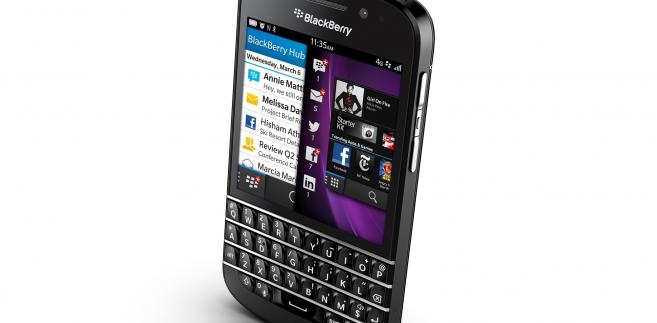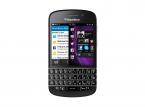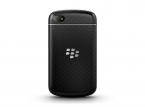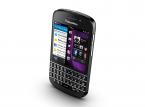Research In Motion Ltd. will give investors Friday Their first real insight into how the company’s all-or-nothing bet on a new breed of BlackBerry devices is faring.
The smartphone maker
long ago stopped providing financial guidance, and analysts’ forecasts of quarterly shipments of the new phones are all over the map-ranging from as few as 2.75 million to as many as five million. In part, the estimates vary so much because RIM staggered the devices’ rollout around the world.
The touch screen
Z10 has been selling in Canada and the UK for most of this year, and Friday’s report would offer the first full quarter of Z10 shipments in the U.S. market.
Results will not include shipments of the keyboard-equipped Q10 in the U.S. since That device only went to there customers Earlier this month. In the quarter, RIM is also expected to ship roughly 5 million older model BlackBerrys.
Sales of the new BlackBerrys are expected to fall well shy of Competitors Including Apple Inc. ‘s iPhone and Samsung Electronics Co.’s smartphones. But respectable sales in RIM’s fiscal first quarter ended June 1 could bolster confidence in RIM Chief Executive Thorsten Heins’ turnaround plans.
RIM shares, Which tumbled last year amid delays in the new phones and fears about the company’s survival, have surged 50% so far this year. The stock closed Friday at $ 14.91 on Nasdaq, giving RIM a market value of $ 7.8 billion.
Since taking the helm in January 2012, Mr.. Heins has avoided radical shifts like selling off the company’s equipment operations, or the entire company. Instead, he has focused on pushing out BlackBerry 10, the company’s long-delayed new operating system, and newer phones like the Z10 and Q10 that use it to market.
Time is not on the Waterloo, Ontario, the company’s side. RIM’s share of U.S. smartphone sales from February to April of this year were less than 1% of total sales, says Kantar Worldpanel Comtech, down from 5% the previous year. By comparison, iPhones had 41% of the market, and Android phones had 51%.
RIM’s closest competitor these days, say analysts, is Microsoft Corp. ‘s Windows operating system, Nokia Corp. Which powers. phones among others, and has 5.6% of the U.S. market.
“Every quarter That passes without superlative sales is closer to them giving them [the hardware business] up, or maybe looking to sell That business or somehow make a transition,” said Charles Golvin, a Forrester analyst. “No Matter Which road they choose it is a tough one.”
RIM has recently raised expectations. When the Z10 went on sale in Canada and the U.K. In February, the company hailed the launches as the “best ever” For those countries without providing details. RIM has yet to disclose U.S. sales figures for the phone.
The company has been less effusive about the Q10 Which went on sale in some markets in May but only launched in the U.S. Earlier this month. Analysts have long expected the Q10 to sell well, citing what they said would be pent-up demand from BlackBerry loyalists eager for a new keyboard-equipped phone.
Overall, RIM is expected to report quarterly revenue of $ 3.3 billion and a profit of 5 cents a share. A year ago, it posted a rare operating loss as sales fell 33% to $ 2.8 billion.
At a conference last month, Mr. Heins Introduced a lower-priced phone, the Q5, Which the company is aiming at emerging markets. That phone went on sale in Dubai this month.At the same event, Mr. Heins gave what many analysts Interpreted as the first glimpse of a strategy shift away from hardware sales and into software and services-focused revenue streams. He said BlackBerry Messenger, the company’s popular messaging tool, would soon be available on Apple and Android devices.
This week RIM unveiled another push into services: allowing corporate clients the ability to manage non-BlackBerry devices using RIM software. That program, called Secure Work Space, lets corporate technology departments to manage Apple or Android devices using a new version of RIM’s BlackBerry Enterprise Service, or BES. The offering would cost $ 99 a year per device.





IKO now available for BlackBerry and Nokia


 When unveiled BlackBerry BB10 and the first two smartphones running on the new operating system, everyone sort of intuitively DECIDED That the Q10 with its QWERTY keypad was the flagship smartphone. Surprisingly, BlackBerry launched the all-touch Z10 first, Which led many BlackBerry die-hard fans (yeah, they still exist) to wait for the “real deal.” The Canadian smartphone maker finds itself in a peculiar situation as it struggles to keep up with its rivals That have all-touch phones with huge touchscreens, as well as appeal to its existing user base That swears by its physical QWERTY keypad. Can Blackberry cling on to the past while forging a place for itself in the future of mobile computing? Let’s find out.
When unveiled BlackBerry BB10 and the first two smartphones running on the new operating system, everyone sort of intuitively DECIDED That the Q10 with its QWERTY keypad was the flagship smartphone. Surprisingly, BlackBerry launched the all-touch Z10 first, Which led many BlackBerry die-hard fans (yeah, they still exist) to wait for the “real deal.” The Canadian smartphone maker finds itself in a peculiar situation as it struggles to keep up with its rivals That have all-touch phones with huge touchscreens, as well as appeal to its existing user base That swears by its physical QWERTY keypad. Can Blackberry cling on to the past while forging a place for itself in the future of mobile computing? Let’s find out.  Being the only high-end smartphone with a physical QWERTY keypad Ensures That the Q10 does not have any issues with standing out in a crowd of smartphones. Unlike the Z10, Which had an uninspiring design, the designers have done a good job with the Q10. The Q10 looks as well as feels premium, Which is a rarity these days even in the high-end segment where Certain vendors get away with cheap plastic and faux chrome trimmings. The black variant has a 3D weave pattern on the back That not only Provides a nice grip but also makes the phone look classy. The white variant, which I received for review, however lacked That weave design but the dimpled pattern worked for me.
Being the only high-end smartphone with a physical QWERTY keypad Ensures That the Q10 does not have any issues with standing out in a crowd of smartphones. Unlike the Z10, Which had an uninspiring design, the designers have done a good job with the Q10. The Q10 looks as well as feels premium, Which is a rarity these days even in the high-end segment where Certain vendors get away with cheap plastic and faux chrome trimmings. The black variant has a 3D weave pattern on the back That not only Provides a nice grip but also makes the phone look classy. The white variant, which I received for review, however lacked That weave design but the dimpled pattern worked for me.  The metal band That encircles the entire frame lends a sense of sturdiness, Which is missing from most flagship smartphones these days. A metal strip between every row in the keypad Ensures That the phone does not flex and gives an impression with the new hotel keys will not fall off, like they did in some older BlackBerry smartphones. Even the back cover snaps with an assuring click. The Q10 is certainly one of the best built smartphones out there.
The metal band That encircles the entire frame lends a sense of sturdiness, Which is missing from most flagship smartphones these days. A metal strip between every row in the keypad Ensures That the phone does not flex and gives an impression with the new hotel keys will not fall off, like they did in some older BlackBerry smartphones. Even the back cover snaps with an assuring click. The Q10 is certainly one of the best built smartphones out there.  Unlike older keypads, That especially on the Bold 9900, the Q10′s predecessor, the BlackBerry has let go of the curved edges and has gone for a flatter keypad. The difference is a little difficult to explain but it Becomes apparent when one starts thumbing on the keypad. It takes a while getting used to, especially for someone who had to let go of physical QWERTY keypads years ago and feels at home thumbing on a glass surface rather than plastic keys. Irrespective of my personal preferences, the keys on the Q10 have just the right amount of give and would appeal to those who still use a BlackBerry Bold.
Unlike older keypads, That especially on the Bold 9900, the Q10′s predecessor, the BlackBerry has let go of the curved edges and has gone for a flatter keypad. The difference is a little difficult to explain but it Becomes apparent when one starts thumbing on the keypad. It takes a while getting used to, especially for someone who had to let go of physical QWERTY keypads years ago and feels at home thumbing on a glass surface rather than plastic keys. Irrespective of my personal preferences, the keys on the Q10 have just the right amount of give and would appeal to those who still use a BlackBerry Bold.  On the hardware front, not much has changed since the Z10, with the Q10 retaining most of the specifications as the other BB10 smartphone . It still runs on a Qualcomm dual-core processor clocked at 1.5GHz coupled with 2GB of RAM and 16GB of internal memory. The microSD card slot remains as well and so does the 8-megapixel rear camera and a 2-megapixel front facing camera.
On the hardware front, not much has changed since the Z10, with the Q10 retaining most of the specifications as the other BB10 smartphone . It still runs on a Qualcomm dual-core processor clocked at 1.5GHz coupled with 2GB of RAM and 16GB of internal memory. The microSD card slot remains as well and so does the 8-megapixel rear camera and a 2-megapixel front facing camera.  I will not delve deep into the BB10 and how its gestures work, which I have previously covered in the Z10 review, but running the same OS with the same gestures seems a bit odd on the Q10. BB10 was built ground up for an all-touch user interface, Which the designers rightly thought was the future (or rather the present). Swiping up from the bottom of the display on the Q10 is unintuitive and especially the slide up, right flick gesture to get into the hub Takes Time getting used to on the tiny 3.1-inch display. Eventually I started swiping up from the topmost row of keys rather than trying to search for the edge of the display.
I will not delve deep into the BB10 and how its gestures work, which I have previously covered in the Z10 review, but running the same OS with the same gestures seems a bit odd on the Q10. BB10 was built ground up for an all-touch user interface, Which the designers rightly thought was the future (or rather the present). Swiping up from the bottom of the display on the Q10 is unintuitive and especially the slide up, right flick gesture to get into the hub Takes Time getting used to on the tiny 3.1-inch display. Eventually I started swiping up from the topmost row of keys rather than trying to search for the edge of the display.  The BlackBerry Q10 turned out to be a mixed bag when it came to performance. It delivers on the core promise of providing the best physical QWERTY keypad experience on a high-end smartphone, Which has always been BlackBerry’s forte and especially now when there are no high-end smartphones with a physical keypad any longer. In That sense, the Q10 has a niche of its own and does not have any competition. So if one is looking for a phone with a physical QWERTY keypad, there are really no other options and the Q10 Becomes the obvious Choice Awards.
The BlackBerry Q10 turned out to be a mixed bag when it came to performance. It delivers on the core promise of providing the best physical QWERTY keypad experience on a high-end smartphone, Which has always been BlackBerry’s forte and especially now when there are no high-end smartphones with a physical keypad any longer. In That sense, the Q10 has a niche of its own and does not have any competition. So if one is looking for a phone with a physical QWERTY keypad, there are really no other options and the Q10 Becomes the obvious Choice Awards.  As with the BlackBerry Z10, the Q10 is not going to make users switch over from Android or iOS to BlackBerry. This one is Exclusively for those who need a physical QWERTY keypad and BlackBerry users are already. I can not think of any other reason why anyone would spend Rs 44,990 on the Q10 if not for the keypad, considering it hardly does anything else better than other smartphones at this price point. The Q10, with its premium build quality and design, has been undone by the BlackBerry’s pricing policies.
As with the BlackBerry Z10, the Q10 is not going to make users switch over from Android or iOS to BlackBerry. This one is Exclusively for those who need a physical QWERTY keypad and BlackBerry users are already. I can not think of any other reason why anyone would spend Rs 44,990 on the Q10 if not for the keypad, considering it hardly does anything else better than other smartphones at this price point. The Q10, with its premium build quality and design, has been undone by the BlackBerry’s pricing policies. 

